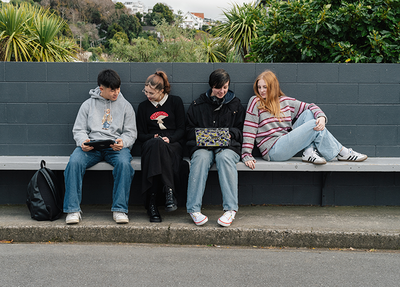Shedding Light on Online Misogyny: New Research Reveals its links to Violent Extremism
Online Misogyny and Violent Extremism—Understanding the Landscape is the latest research and online resource published by Te Mana Whakaatu—Classification Office. It finds that misogyny frequently appears in the type of content that is restricted or even banned with a clear link to violent extremism.
Misogyny is a common thread across various hateful and extremist ideologies growing online both in Aotearoa and around the world.
Online Misogyny and Violent Extremism—Understanding the Landscape is the latest research and online resource published by Te Mana Whakaatu—Classification Office. It finds that misogyny frequently appears in the type of content that is restricted or even banned with a clear link to violent extremism.
“Through our daily classification work we saw a common thread of misogyny in the propaganda of extremists who had committed mass violence and murder. This research exercise deepened our concern: misogyny online is pervasive; it is threatening, and it is harmful”, says Chief Censor Caroline Flora.
Chief Censor Caroline Flora says Te Mana Whakaatu wanted to gain a deeper understanding of online misogyny and its links to violent extremism in Aotearoa, and then to take a look at how that relates in the international context.
“Because of our classification work and our previous research we know that New Zealanders find it hard to avoid seeing harmful or offensive content online. We also noticed the emergence of specific hateful ideologies targeting women within terrorist and violent extremist content.
“We could see that further research was needed so we commissioned Hate and Extremism Insights Aotearoa to do a literature review and content analysis for us. From this we did further research, developed our online resource and created a summary report to provide information for academics, researchers, government and non-governmental organisations.”
Misogyny refers to hatred, contempt, dislike or distrust for women and girls based on their gender, and a belief that women and girls are inherently inferior to men and boys.
“We’ve observed misogynistic elements in some of the terrorist and violent extremist content (TVEC) and violent sexual content we’ve analysed. We can’t restrict or ban a publication just because it contains misogynistic themes or content; however, these are often present when other classification criteria result in a ban,” says Ms Flora.
Misogynistic content is found in manifestos, online games, videos and images. The Office found that:
- The threats posed by incel (involuntary celibate) ideology, along with other misogynistic and male supremacist ideologies, is becoming more widely recognised.
- New trends in extremist beliefs are emerging, particularly among boys and young men. These include individuals adopting mixed and unstable beliefs as well as some who are not tied to any specific ideology but are drawn solely to violence itself.
- Algorithms amplify misogynistic and extremist content, making it easier for vulnerable people to encounter and possibly adopt more extreme ideologies.
The research also found many overlapping and closely related issues across online misogyny and violent extremism:
- Women and girls are more likely to encounter gender-based and severe forms of abuse online, which sometimes spill over (extend into or carry over) to the real (or offline) world.
- Online abuse in the form of gendered disinformation targets women, particularly those in public roles.
- Misogyny, when combined with other forms of discrimination like racism, intensifies the harm experienced by women with intersecting identities.
- Emerging categories of content and technology, such as deepfakes and other AI-generated materials, are creating new challenges.
- Online platforms play a key role in amplifying and perpetuating harmful content including misogynistic content.
Ms Flora says while this research and online resource provide valuable insights there are gaps in New Zealand’s information and data collection.
“There are no standard methods for collecting and analysing data on online misogyny across government agencies and NGOs”, says Ms Flora.
“It’s our hope that this work helps to provide insight into the current situation for those working in this field.”
A publicly accessible online resource is now available. It is the primary source of the research summary report, and literature review. It provides links and glossary tips for all of the supporting research and information. This resource is aimed at academics, researchers, government, and non-governmental organisations and is a snapshot of the available research at time of publication.
Te Mana Whakaatu is an independent Crown entity responsible for classifying material which may need to be restricted or banned. This can include films, books, video games and online content. The Office can restrict or ban content that promotes crime, terrorism or violence. The Office also conduct research and produce evidence-based resources to promote media literacy and enable New Zealanders to make informed choices about what they watch.
Media enquiries
Please direct all media enquiries to info@classificationoffice.govt.nz.
Further resources
Visit: https://www.classificationoffice.govt.nz/resources/research/online-misogyny-and-violent-extremism/.
Subscribe to our news
Stay up to date with news from the Classification Office.


